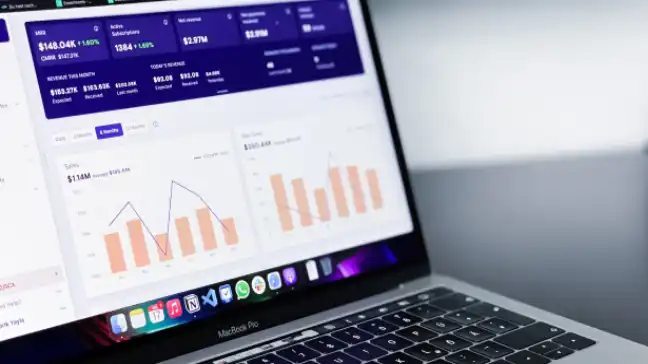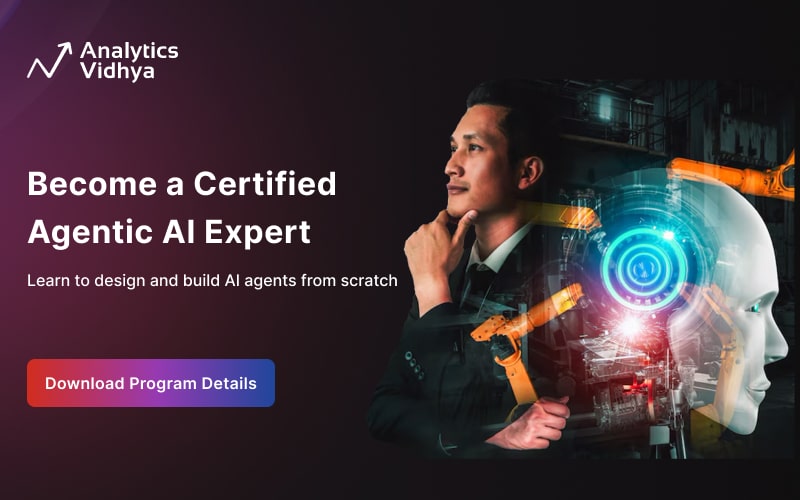In today’s fast moving world, many businesses use AI agents to handle their tasks autonomously. However, these agents often operate in isolation, unable to communicate across different systems or vendors. The agent to agent protocol (A2A) addresses this challenge. Led by Google Cloud, A2A is an open standard providing a common language for agent cooperation that aims to boost productivity and reduce integration costs. This initiative by Google establishes a standard AI agent communication protocol and exemplifies how agentic AI can be made more useful. In this article, we will explore more about the A2A protocol to understand what it does, how it works, etc.
Table of Contents
The Problem: AI Agents Working in Isolation
AI agents are getting smarter and can handle complex tasks. But they are limited because they can’t easily team up. When agents can’t communicate, companies have to build special links between them or have people manually pass information back and forth. This makes things slow and stops AI from working together effectively. For instance, if one agent needs some customer data held by another agent; without a standard way to ask, or a set protocol, the process stops.
The Solution: A2A Protocol
The Agent-to-Agent (A2A) Protocol directly tackles this communication gap. It offers a standard way for AI agents to connect. Using this protocol, agents can find out what other agents do, share information safely, and coordinate work across different company systems. Google Cloud started A2A with help from over 50 partners like Atlassian, Langchain, Salesforce, SAP, and ServiceNow. This joint effort shows a strong push towards making agents work better together.

This image depicts two agents communicating across organizational or technological boundaries using an A2A protocol. Each agent manages the local agents and interacts with APIs & Enterprise Applications using MCP (Model Context Protocol). The A2A protocol facilitates direct communication between these high-level agents, while the MCP handles the interaction of each agent with other systems like API or applications.
A2A works alongside other ideas like Anthropic’s MCP, which gives single agents access to required tools and information. A2A adds to this by letting these capable agents use their tools together. Google Cloud used its own experience with large agent systems to build A2A, focusing on the needs of big companies using many agents.
The protocol lets developers build agents that can connect to any other agent using A2A. This gives users the freedom to mix agents from different makers. For businesses, it means to have one standard way to manage agents everywhere, which is a big step towards getting the most out of cooperative AI. The Google agent to agent protocol provides the framework necessary to facilitate this.
Also Read: How to Access Apps on ChatGPT, Claude, and Gemini
Why Agent Cooperation is Important Now
Agent cooperation is vital in today’s fast-moving AI world. As companies increasingly rely on automated agents, enabling them to work together provides significant advantages. The agent to agent protocol helps break down data walls, allowing agents stuck within one system to access and use information from others. This connection directly leads to increased productivity; agents teaming up accomplish far more than they could individually, greatly boosting operational efficiency.
Furthermore, adopting a standard AI agent communication protocol lowers connection costs by reducing the need for custom-built links between different systems, saving valuable time and resources. Ultimately, A2A facilitates true teamwork, making it possible to build complex systems where specialized agents collaborate on larger jobs, moving beyond the limits of treating agents as isolated tools.
5 Principles Behind A2A
The agent to agent protocol follows five main ideas to make sure it works well for businesses and can grow over time.

- Focus on Agent Abilities: A2A helps agents work together naturally, even if they don’t share memory or tools. It allows cooperation while letting agents operate independently.
- Use Common Web Standards: Instead of making everything new, A2A uses well-known web standards like HTTP, Server-Sent Events (SSE), and JSON-RPC. This makes it easier to adopt and use this protocol with existing technology.
- Build in Security: The protocol includes strong security from the start. It supports standard ways to check identity and permissions, which is critical for business use.
- Support Long Tasks: A2A can handle jobs that take hours or days. It gives updates along the way, which is needed for complex business operations.
- Handle Different Data Types: A2A knows communication isn’t just text. And so, it supports text, audio, video, and interactive data like forms, letting agents use the best format for the job.
How A2A Works
The agent to agent protocol uses a client-server setup for organized communication.
Here are the main parts:

- Client-Server Model: One agent (the “client”) asks for a task to be done. Another agent (the “server” or “remote” agent) does the task. These roles can change during the conversation. This model is basic to the AI agent communication protocol.
- Agent Cards for Finding Partners: A key feature of A2A is the “Agent Card.” It’s a JSON file that acts like an agent’s profile. It lists the agent’s ID, name, job, type, security needs, and what it can do. This helps the client agents find the right server agent for a specific task.
- Task-Based Steps: The main work unit is called a “task.” Tasks go through clear steps: submitted (started), working (in progress), input-required (needs more info), completed (finished well), failed (had an error), or cancelled (stopped early). This structure helps manage workflows.
- Message Structure: Inside tasks, agents talk using “messages.” Messages contain “parts” that hold the actual content (text, files, data, forms). This allows for sending rich information.
- Artifacts for Results: When a task is done, the output is delivered as “artifacts.” These are structured results, making sure the final output is consistent and easy to use.
The A2A Communication Steps
The agent to agent protocol follows a clear path for agents working together:
- The client agent looks for suitable remote agents by checking their Agent Cards.
- The client and the chosen remote agent agree on the task details, like what needs to be done and how the result should look.
- The remote agent does the task and sends updates. For long tasks, A2A uses Server-Sent Events (SSE) for live status checks.
- When finished, the remote agent sends the results (artifacts) back to the client in the agreed format.
Real-World Uses of A2A Protocol
Seeing how A2A can be used in the real world, makes its value clear. Here are a few examples of using the agent to agent protocol:
Making Hiring Easier
A manager asks their hiring agent to find candidates. Using A2A, this agent talks to other specialized agents such as one finds resumes on job sites, another checks calendars and schedules interviews, and a third starts background checks. The Google agent to agent protocol connects these steps smoothly.
Connecting Business Operations
Companies can link agents for customer support, inventory management, and finance using A2A. This allows smooth, automated processes that cross different departments, improving how the business runs through agent to agent protocol in ai.
Linking Different Software
A2A helps create workflows that use multiple applications to increase the interoperability, like connecting a purchasing agent to an SAP agent to create an order. Linking a research agent to a stock market agent to execute an order.
The Emerging A2A Community
The agent to agent protocol has backing from many tech companies and service providers:
- Tech Partners: Companies like Atlassian, Box, Langchain, MongoDB, Salesforce, SAP, and ServiceNow support A2A.
- Service Providers: Firms like Accenture, Deloitte, Infosys, KPMG, and PwC offer help with putting A2A into practice.
Industry leaders already see the value of this innovation. Harrison Chase, CEO at LangChain, said, “…agents interacting with other agents is the very near future… we are excited to be collaborating… to come up with a shared protocol…” This support shows the need for a standard AI agent communication protocol.
Exploring A2A Resources
Developers wanting to use the agent to agent protocol can find help:
- Documentation: The draft A2A technical details are online. Read it Here
- Code Examples: Google provides code samples to show how to use A2A. Read it Here
- Community Help: A2A is developed openly, and developers can contribute ideas.
Conclusion
The Agent-to-Agent (A2A) Protocol is a big step for AI systems. It gives a standard way for agents to find each other, talk safely, and work together on complex jobs. This can change how businesses use AI. As companies use more autonomous agents, making them cooperate easily across different systems will be key to success.
The agent to agent protocol provides an open, safe, and flexible way to do this. With strong industry support, A2A is set to become the standard for agent teamwork, opening up new possibilities and making AI easier to adopt. The future is not just about smart single agents, but about systems where agents work together effectively using standards like this AI agent communication protocol.
Frequently Asked Questions
A. A2A is an open standard, started by Google Cloud, that lets AI agents from different makers or systems communicate and work together.
A. Google Cloud leads it, working with over 50 partners including tech companies (like Salesforce, SAP) and service firms (like Accenture, Deloitte).
A. It solves the problem that AI agents often can’t talk to each other, which limits their usefulness. A standard protocol helps them cooperate, boosting efficiency and lowering costs.
A. It uses a client-server approach where agents exchange structured messages for specific “tasks.” They find each other using “Agent Cards” and communicate securely using web standards.
A. While draft information is available now, a stable version (1.0) ready for widespread business use is expected later in 2025.







